
Baking Soda and Vinegar
This combination isn’t deadly (you’ve probably used it before!), but it’s not as effective as you might think. Because baking soda is basic and vinegar is acidic, combining the two results in mostly water. The mixture isn’t toxic, but it’s not a cleaning powerhouse.

Hydrogen Peroxide and Vinegar
Alone, they’re considered great natural cleaning ingredients, but when combined, hydrogen peroxide and vinegar create something called peracetic acid. The mixture is corrosive and might damage whatever surface you’re cleaning. It can also irritate the skin, eyes and respiratory system.
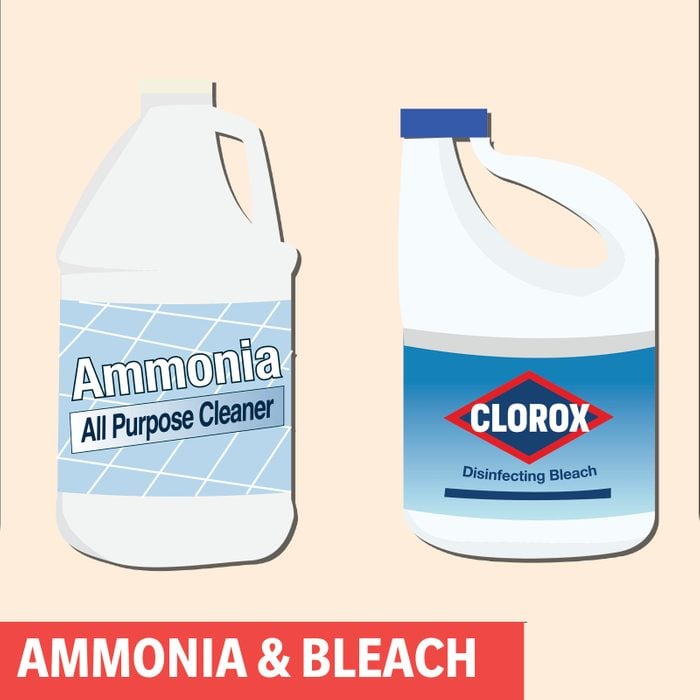
Ammonia and Bleach
Never use ammonia and bleach together. These two common ingredients are found in quite a few cleaning products, so before using multiple products on the same surfaces, check the ingredient lists. If one product uses ammonia and the other uses bleach, choose one over the other. Inhaling the combined vapors can result in respiratory damage and throat burns. Yikes!

Vinegar and Bleach
Two of the most common disinfectants are vinegar and bleach, but surprisingly, they should never be used together. The acid in vinegar releases toxic chlorine and chloramine vapors when added to bleach. This combination could cause chemical burns to your eyes and lungs.

Rubbing Alcohol and Bleach
While bleach and rubbing alcohol (isopropyl) are cost-effective cleaners, they make chloroform when mixed. You know, the scary stuff you see the bad guys in movies put on rags to knock people out. Although inhaling the fumes may not make you pass out, cleaning with this combo is not recommended. It’s a good idea to store the bottles separately.

Different Drain Cleaners
Don’t turn your clogged drain into a dangerous chemistry experiment! Common ingredients in drain cleaners include sodium hydroxide, sulfuric acid, bleach and hydrochloric acid. Different brands use different chemicals, so if you use two cleaners in the same drain, the chemicals could create a harmful reaction.
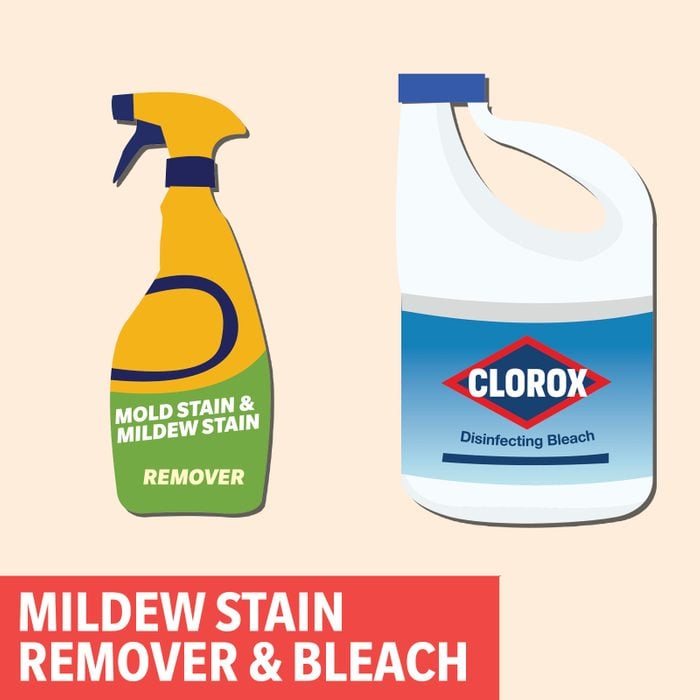
Mildew Stain Remover and Bleach
You might be tempted to fight stubborn mildew with both a mildew cleaner (like Kaboom) and bleach. But you should steer clear of this combo. Mildew stain remover contains acid, which, when combined with bleach, produces chlorine gas. This can cause irritation of the eyes, nose, throat and lungs.
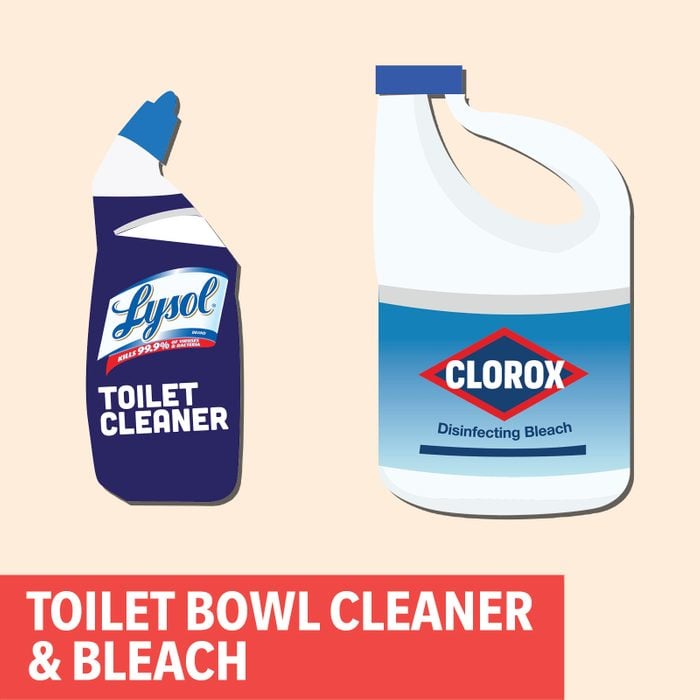
Toilet Bowl Cleaner and Bleach
Some toilet bowl cleaners contain bleach and are perfectly safe to use. However, the mixture of acidic-based toilet bowl cleaner with bleach is not good for your health. It releases toxic fumes that can cause breathing issues and watery eyes.

Vinegar and Castile Soap
When making natural homemade cleaners, avoid this combination. It’s not deadly, but the two ingredients together make a big ineffective mess. The acid in vinegar breaks down the castile soap and creates a chunky, oily mixture—definitely not something you want to use for cleaning!

Lysol and Bleach
When you’re disinfecting with Lysol, don’t mix it with bleach. The bleach oxidizes the 2-benzyl-4-chlorophenol that is in Lysol, resulting in various irritating and toxic compounds. Plus, Lysol kills 99.9% of viruses and bacteria on most surfaces, so there’s no need to add bleach.
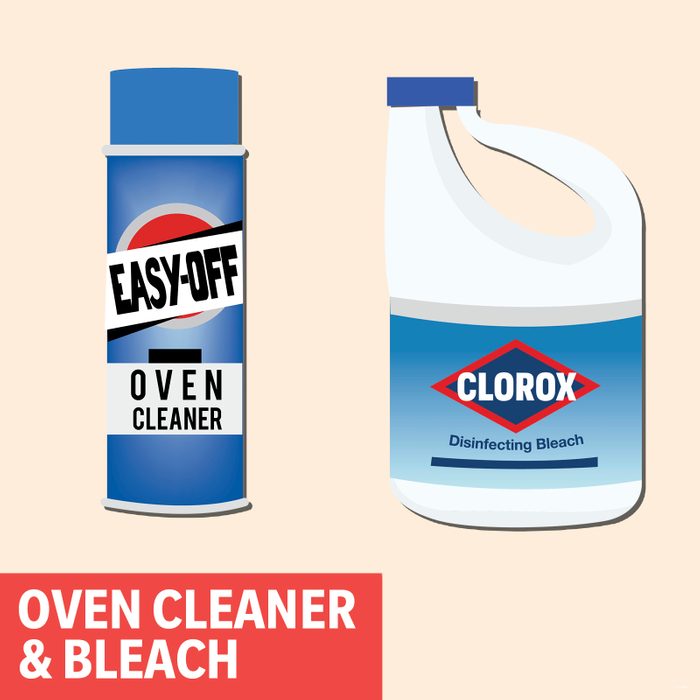
Oven Cleaner and Bleach
Oven cleaner is powerful and should never be used in combination with bleach. The mixture can produce chlorine gas, resulting in irritation of the eyes, nose, throat and lungs. If you want to make your own DIY oven cleaner, use baking soda and water.

Dish Detergent and Bleach
Mixing dish soap and vinegar is a great cleaning agent, but never replace the vinegar with bleach. Though many common dish detergents, like Dawn, don’t have ammonia in their ingredient lists, some dish soaps might have amines, which are organic compounds derived from ammonia. Because of this, bleach should not be mixed with dish detergents.

Lemon Juice and Bleach
Acidic lemon juice is an effective cleaner for things like your microwave or water-stained faucets. But just like acidic commercial cleaning products, mixing lemon juice and bleach should be avoided because it results in toxic chlorine gas.

Glass Cleaner and Bleach
Time to clean the windows? Remember, mixing bleach with glass cleaner like Windex releases toxic gases and produces toxic chemicals. Though there are ammonia-free Windex options, one of the ingredients in regular Windex is ammonia. The combination of ammonia and bleach’s main ingredient, sodium hypochlorite, produces chloramine vapor.

Vinegar and Water (on Wood Floors)
If you use vinegar and water to clean wood floors, you might use an excessive amount of moisture, which can damage the wood. Plus, because vinegar is an acid, it will break down the finish on the surface of your wood floor and cause a dull appearance over time.

Antibacterials/Disinfectants and Detergent
If you’ve ever cleaned with a combination of Formula 409 Multi-Surface Cleaner and foamy soap, you might not be doing as much as you think. Mixing a disinfectant that uses quaternary ammonia with a foaming cleanser may seem like the perfect combo to strip away grime, but it actually results in quite the opposite. The combination neutralizes the disinfectant properties.

Certain Pesticides and Water
Some pesticides are safely diluted with water before spraying them around the interior or exterior of your home. But keep in mind, if a phosphide-containing pesticide comes into contact with water or moisture, the combination can generate phosphine gas. Read labels carefully.

Drain Cleaner and Bleach
Skin cells, hair and soap scum build up over time, so it’s only normal to feel the need to double down on cleaning drains. Combining drain cleaner with bleach, however, can produce chlorine gas. Breathing this in can have long-lasting health effects that may ultimately require medical treatment. Keep your eyes, nose and lungs safe from toxic fumes by avoiding this mixture.
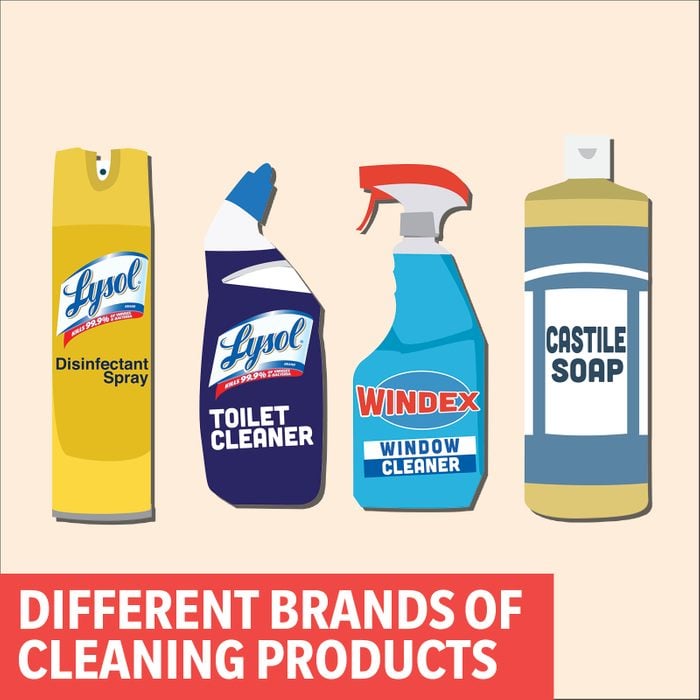
Different Brands of Cleaning Products
With all the potential combinations listed so far, it’s best to avoid using multiple cleaning products at once (especially when using bleach). If you’re not sure whether a certain mixture could cause irritation, result in a medical issue or neutralize each other (thus becoming ineffective), opt for one product at a time. You can even organize your under-sink products and see which ones you can live without. You might be surprised how the simplest products can be used on most surfaces!

Bleach and Other Cleaning Products
Whether it’s a glass cleaner, dishwasher detergent, toilet cleaner, floor cleaner, wood cleaner or more, combining bleach with various other cleaning products can result in the production of chlorine gas. Like other unsafe mixtures, this chlorine gas can cause severe respiratory and ocular problems. If you’re using bleach, use it by itself, and rinse well before cleaning with another product.
